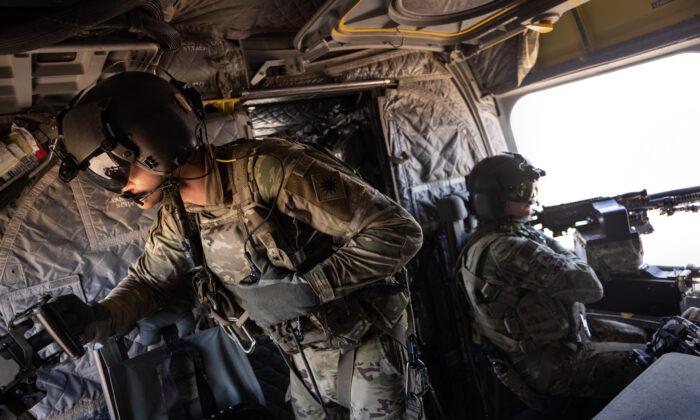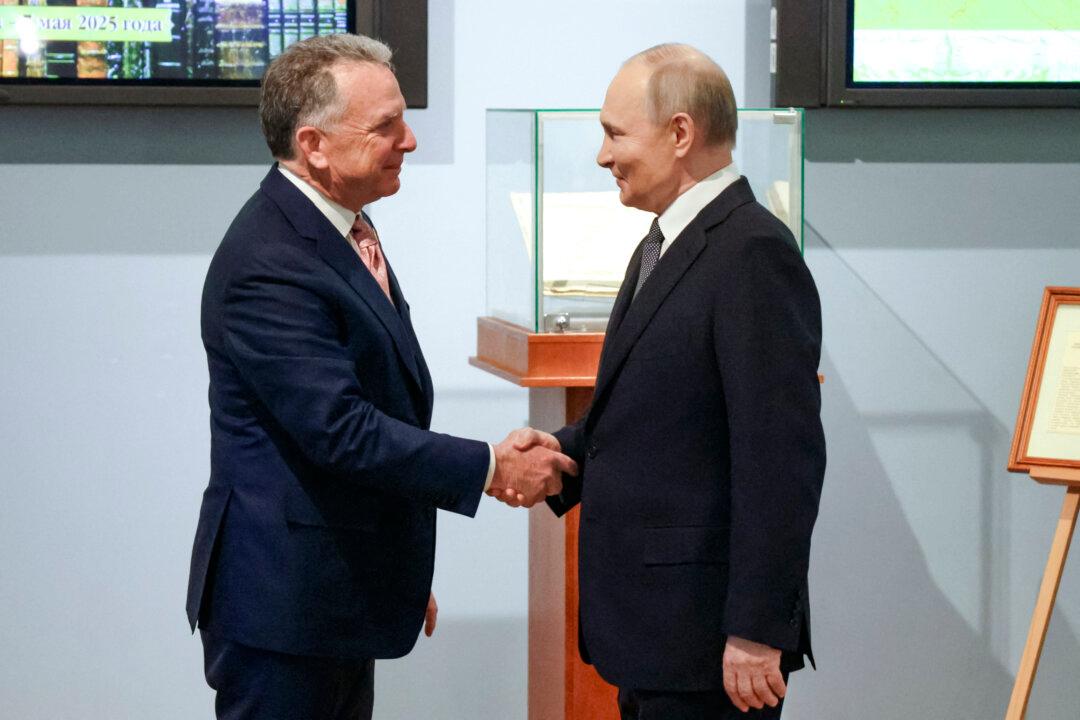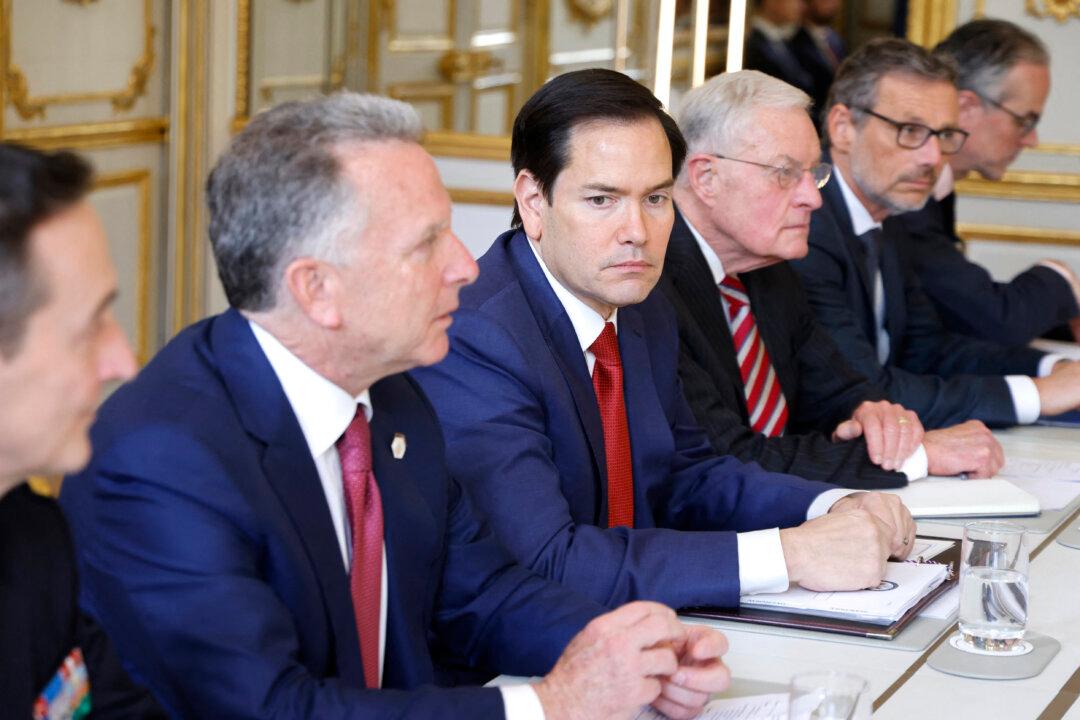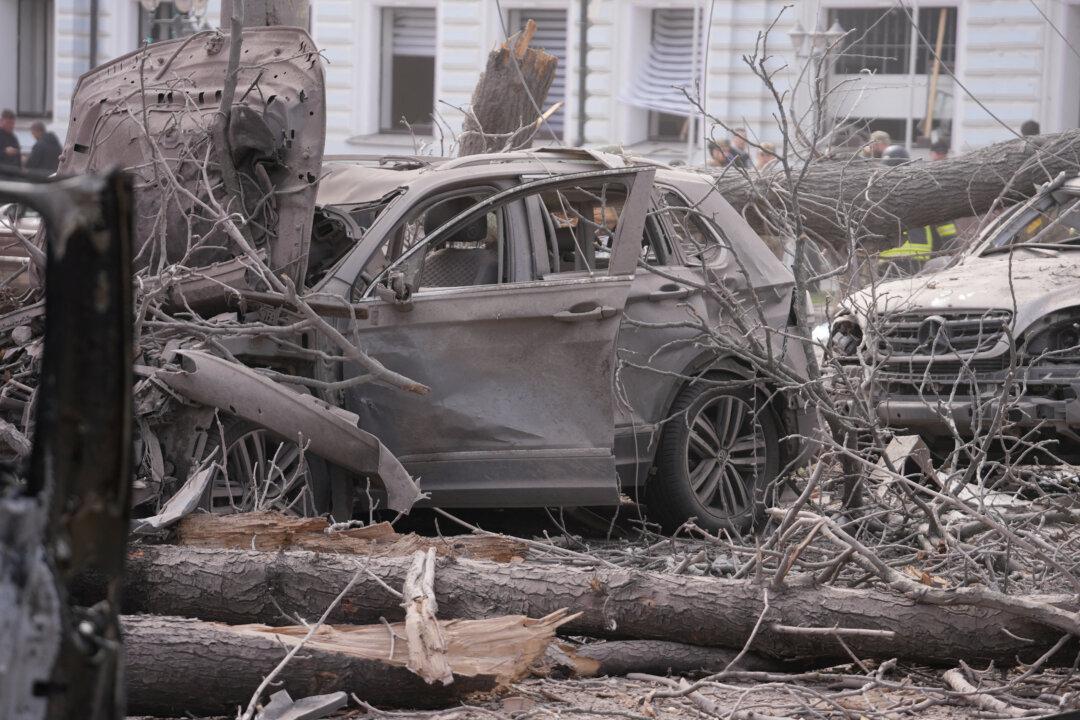Syria’s parliament repeated calls on Oct. 6 for the immediate departure of all Turkish and U.S. troops from Syrian territory in the wake of a drone strike in the city of Homs that left scores dead.
“This attack was a heinous crime carried out by terrorists,” the parliament said in a statement on Oct. 6. Syria blames the United States, Turkey, and Israel for supporting the attack.
A day earlier, a military academy in the west-central city of Homs came under attack by multiple aerial drones during a graduation ceremony for army cadets. Eighty-nine people were killed in the attack, including numerous women and children, and more than 275 were injured, according to Syria’s health ministry.
The incident was the deadliest drone attack against a Syrian government target. Defense Minister Ali Mahmoud Abbas reportedly left the venue minutes before the strike, which is said to have involved a “swarm” of attack drones.
No group has claimed responsibility for the attack, but the General Command of the Syrian Army pointed the finger at “terrorist groups backed by prominent international parties.”
The General Command called the attack “an unprecedented criminal act,” and vowed to respond “with full force and determination,” in a statement carried by Syria’s SANA news agency.
The next day, the Syrian army shelled positions in the northern Aleppo and Idlib provinces, which are under the control of Turkish-backed militant groups that oppose Damascus.
While Ankara refers to the latter as “rebel groups,” Damascus sees them as “foreign-backed terrorists.”

Turkish, US ‘Occupation’
Since 2016, NATO member Turkey has carried out three incursions into northern Syria, where it still maintains a military presence east of the Euphrates River. Ankara asserts that the deployments are necessary to safeguard Turkey’s 565-mile border with Syria from Kurdish militant groups operating in the region.Since late last year, Ankara, with Moscow’s help, has sought to normalize its relations with Damascus, which have remained frozen since 2011.
But Damascus conditions any resumption of ties on Turkey’s full withdrawal from Syrian territory.
“The Turkish occupation in northern Syria must end,” Syrian Foreign Minister Faisal Mekdad reiterated early last month.
“Turkey is well aware that its full withdrawal [from Syrian territory] is the only way to restore diplomatic relations to their previous level,” he added.
Meanwhile, in eastern Syria, the United States also maintains a string of military bases where roughly 1,000 troops are housed. Washington claims that continued military presence is needed to prevent a resurgence of the ISIS terrorist group.
U.S. troops in Syria work alongside the so-called Syrian Democratic Forces (SDF), a loose coalition of ethnic militias and “rebel” groups cobbled together in 2015.
With U.S. support, the SDF has carved out an enclave in oil-rich eastern Syria–roughly one-fourth of the country–where the Syrian government exerts little control.
Damascus, for its part, views the continued presence of U.S. troops–and their local allies–as an illegitimate “foreign occupation.”
It’s a view shared by Russia and Iran, both of which have also kept military forces in Syria–albeit at the latter’s invitation–since 2015.
In its Oct. 6 statement, Syria’s parliament accused U.S. and Turkish “occupation forces” of supporting and funding “terrorist groups” in the country and “plundering Syria’s natural resources.”

Spat Between Allies
Although they both maintain forces in Syria, the United States and Turkey hardly see eye-to-eye regarding the country’s complex political situation. The main bone of contention between the two NATO allies is the SDF, Washington’s principal ally in the region.The SDF’s main component is the YPG, the Syrian branch of the Kurdistan Workers Party (PKK), which is based in northern Iraq.
Turkey, along with Washington and Brussels, views the PKK as a terrorist organization.
But while the United States draws a distinction between the PKK and the YPG, Ankara views them both as terrorist groups.
Last week, Turkey renewed military strikes on suspected PKK/YPG targets in northern Syria following a suicide bombing in the Turkish capital.
Responsibility for the Oct. 1 bombing, which left two attackers dead and two policemen injured, has since been claimed by the PKK.
“All infrastructure ... belonging to the PKK and YPG, especially in Iraq and Syria, are henceforth legitimate targets of our security forces,” Turkish Foreign Minister Hakan Fidan said on Oct. 4.
On Oct. 5, Ankara blamed the YPG for a rocket attack on a Turkish base in northwestern Syria that killed a police officer and injured several others.
The next day, the Turkish military carried out wide-ranging strikes on suspected PKK/YPG targets in eastern Turkey and northern Syria. According to Turkey’s defense ministry, dozens of PKK/YPG targets were destroyed–and 26 Kurdish militants killed–in overnight raids.
“All the terrorist organization’s capabilities in Syria will continue to be systematically destroyed,” Turkey’s foreign ministry said in an Oct. 6 statement.
Further complicating the situation, a Turkish drone was shot down by U.S. forces in Syria on Oct. 5–the same day as the deadly drone strike in Homs. While the incident appeared to have been an accident, it was the first time the U.S. military has downed an aircraft belonging to NATO ally Turkey.
A Pentagon spokesman later said that the drone was shot down by an F-16 fighter jet after it flew close to U.S. positions in eastern Syria.
Turkey’s foreign ministry has since confirmed the loss of the drone, which it attributed to conflicting “technical assessments.”
“During operations, one unmanned combat aerial vehicle was lost due to different technical assessments in the deconfliction mechanism with third parties,” the ministry said on Oct. 6.
“Necessary measures are being taken to ensure a more effective operation of the deconfliction mechanism with the relevant parties,” it added, without specifically mentioning the United States.
The ministry asserted that the incident “in no way affects ongoing operations [in northern Syria] and the targeting of designated objectives.”







